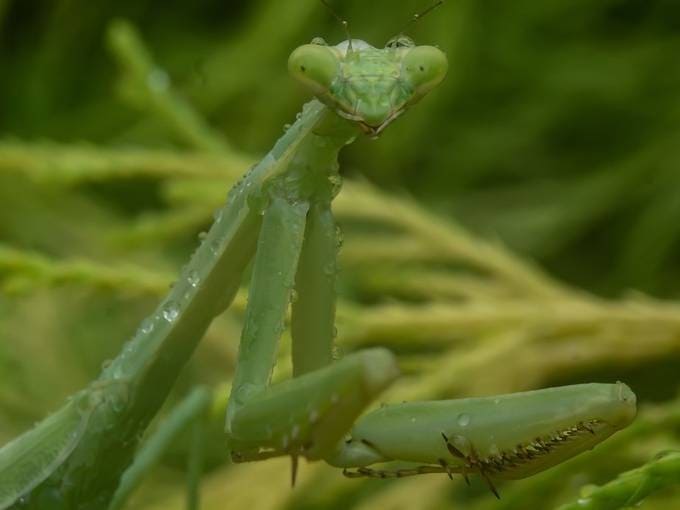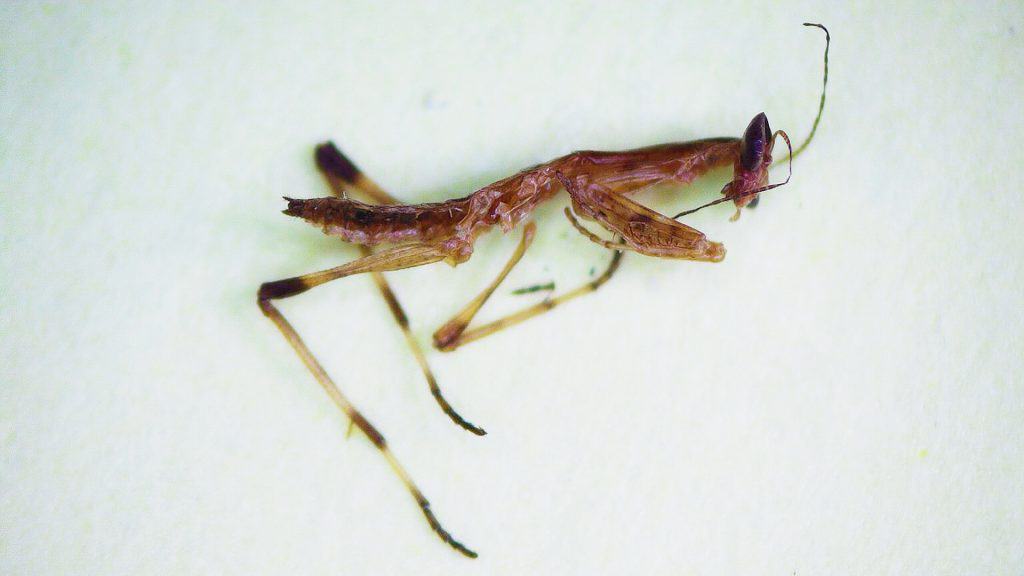Have you ever wondered if praying mantises can truly transform their hues? In this article, we will unravel the mystery behind the question: “Do praying mantis change color?” Join us on this intriguing journey as we explore the fascinating phenomena of color change in these unique insects.

Understanding praying mantis coloration
Understanding the coloration of these insect is key to unraveling the mystery of praying mantis color change. These fascinating creatures typically exhibit a range of colors, usually including shades of green, brown, and even combinations of both. However there are over 2000 mantis species and every species looks different! Some are red, black, white or even purple. Their coloration serves multiple purposes, with camouflage being a prominent feature. Praying mantises blend seamlessly with their natural surroundings, allowing them to remain inconspicuous while patiently awaiting their prey. Additionally, their coloration plays a role in attracting mates and signaling aggression. By comprehending the significance of their natural hues, we can delve deeper into the mesmerizing world of praying mantis coloration and gain a greater appreciation for their adaptive strategies.
Factors influencing praying mantis color change
The mesmerizing ability of praying mantises to change color is influenced by various factors. One significant factor is the interplay between sunlight, humidity, and their molting process. After molting, mantises may shift their color as an adaptive response to predation pressures. For instance, in the green summer, a brown mantis would be more visible to visual daytime predators like birds. Conversely, during the brownish fall, a green mantis would stand out against the changing foliage. This demonstrates the influence of climatic variables on mantis color change. More moderate temperatures, higher humidity, and low light intensity promote green vegetation, providing a favorable environment for mantises to blend in.

Praying mantis changing color after molting
Praying mantises undergo a fascinating transformation in color after molting. This natural process is an intriguing manifestation of their adaptability. As they shed their old exoskeleton and grow, mantises have the opportunity to change their coloration. This phenomenon serves various purposes, including camouflage and improved survival rates. The new coloration allows mantises to better blend into their surroundings and effectively ambush prey while avoiding detection from potential predators.
In rare instances, the color change in praying mantises after molting can go awry, resulting in abnormal or unusual pigmentation. While these instances are not common, they add another layer of intrigue to the complexities of praying mantis coloration and molting processes.
Why do praying mantis turn brown?
The transformation of praying mantis turning brown is a fascinating phenomenon influenced by their surroundings. These remarkable insects adapt their coloration to match their environment for enhanced camouflage and survival. When residing in brown-hued grass or amidst dried foliage, mantises undergo a color change, shifting to various shades of brown after next molt. This adaptation allows them to seamlessly blend into their surroundings, making them virtually invisible to both predators and prey. Conversely, if mantises inhabit green grassy areas, they maintain their green coloration, providing effective camouflage in that specific environment.
Parasite or fungal infection
While the primary reason for the color change in praying mantises is attributed to camouflage and environmental adaptation, other factors such as parasites and fungal infections can also influence their pigmentation. Some research suggests that infestation by internal parasites, may lead to changes in the color pigments present in the mantis’s exoskeleton. Similarly, certain fungal infections, can infect mantises and cause discoloration, ranging from lighter or darker shades to unusual patterns or spots on their exoskeleton. Additionaly infections may be causing praying mantis eyes turning black! The interplay between parasites, fungal infections, and mantis color change adds another layer of complexity to the factors influencing their appearance. These fascinating interactions highlight the intricate dynamics between insects, parasites, pathogens, and their adaptations in the natural world. Further research is necessary to fully understand the extent and significance of these relationships in praying mantis populations.

Conclusion
In conclusion, the color change observed in praying mantises is a captivating phenomenon driven by various factors. From camouflage and environmental adaptation to the influence of parasites and fungal infections, these insects demonstrate their remarkable ability to adapt and survive in their ever-changing surroundings.